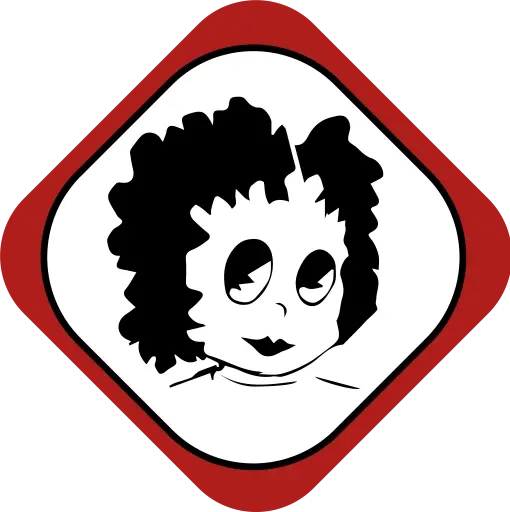When discussing how to support the mental health of students in schools, Cognitive Behavioural Therapy (CBT) is usually mentioned. It’s recommended for use in schools by The Department for Education and National Institute for Health and Care Excellence. But what is it, why is it so useful?
Some of the key reasons that CBT is so effective is because it is about guided self-help. It’s not psychoanalytical in anyway – no one is going to suggest that because you didn’t have a good relationship with your cat as a child that is why you feel the need to throw marshmallows at buses as an adult. CBT is a variety of tools and techniques to help someone look at, and modify, their thought patterns and behaviours. Particularly those that are having a negative impact mental health and wellbeing. The CBT therapist or facilitator acts as a guide helping the person change their thoughts and behaviour patterns. Think Socratic questioning.
Lets be clear from the beginning, there will be people saying ‘CBT isn’t all it’s cracked up to be’. And yes, CBT isn’t for everyone. There are many reasons why it doesn’t work and it’s not for everyone. However, there is a lot of evidence it does work for many people and it if doesn’t, there is little long-term emotional risk – if someone doesn’t want to engage, they don’t and other ways of support can be tried. A big element of CBT is that there’s no failure, only feedback to try a different way.
Cognitive Behavioural Therapy works on the principle that if we have negative thoughts, that affects our behaviour and affects how the world reacts to us all of which have negative impact on our mental health. If we change the negative thought/belief/perception into a positive one, that will change the behaviour, and by changing the behaviour we will change the response from the environment. CBT uses a variety of tools and techniques to help change our negative thoughts and perceptions. To rewire our brain.
Here is a simplistic example. We see someone in the street and wave at them. They don’t respond. A negative thought could be that they aren’t talking to me, and I have done something wrong. This is a negative perception and likely means that next time you see the person you ignore them; they then ignore you and you aren’t speaking.
A positive perception could be that they are distracted or worried about them. Next time you see them you ask are they ok, they tell you what happened, and you are still talking. Simple but true. If you go into something with a negative belief, it’s likely to have a negative outcome.
It’s like the old quote says, ‘Whether you think you can or you can’t, you’re right.’
CBT has developed and modified over the years into Third Wave Therapies such as Acceptance and Commitment Therapy (ACT) and Dialectical Behaviour Therapy (DBT). But the principals are basically the same, just adapted and/or delivered differently. A common theme in therapy is people adapting something or dressing it up differently then labelling it as new and revolutionary. It’s still a potato whether it’s mashed, baked or chipped.
As with all talking therapies, CBT is not an instant fix. New thoughts and behaviours have to be practised to become habit. And as I said, it does not work if the person does not want to change or take personal responsibility for making changes. That’s why many CBT tools work on motivation to change first.
So why is it good for use in schools? It’s because it’s actually quite prescriptive and easy to use. Someone can facilitate CBT by following a script or activity with a student and, if the student doesn’t want to engage, they don’t.
Let’s look at one of the most common CBT based activities that is used and recommended all over social media. Basically, it is about find three good things in each day, usually at the end of the day. The principles behind this very simple activity are psychologically sound and proven. As human beings we commonly have a negative bias where we remember negative events more easily than positive, especially when we are low, feeling less resilient. Psycho analysis would look at the causes of being low and perhaps go back to your childhood. CBT says, ok, lets work to remind ourselves of the positive – change our cognitive bias and feel happier by focussing on positives. There is research that shows this can rewire the brain and improve mental health.
Here’s another example, this activity is from my free Student CBT Resource E-Book called ‘Is it really like that?” It’s designed to help a student reframe the negative thoughts following an event that had a negative outcome. It’s a series of questions in boxes that the facilitator/member of staff would go through with the student. The questions are: what happened? How did it make you feel? What are the negative thoughts you have about it? What is the evidence to support those negative thoughts? What is the evidence that those negative thoughts may be wrong? Is there another way you could think about it. That’s it. I’m sure at this stage you’re thinking ‘Well that’s simple, how does she get paid to come up with something that simple’. But that’s why CBT based activities are so useful in education. They are simple and easy to use.
Now, if that activity was repeated with student every time they had negative thoughts then several things happen. Firstly, they are rewiring their brain, and each time they practise an activity they will believe the alternative a little bit more – remember not an instant fix. Secondly, they are learning how to manage their own emotions which is hugely important to positive mental health. CBT provides tools and techniques that can be used for life. Thirdly, staff who facilitate the activity are learning language they can use in everyday interactions with students. And finally, staff are also learning tools and techniques to support their mental health and wellbeing.
I always liken using CBT in schools to that quote about giving a man a fish or teaching him to fish. With students, we can either solve their problems for them or teach them to solve their own problems. We can teach them tools to self-regulate and manage difficult times. CBT tools give staff the ability to teach students, to have new positive conversations teaching new skills.
As an ex-SENCo and qualified CBT Therapist I saw the value of CBT based tools and activities to empower school staff to support the mental health and wellbeing of students. That’s why I designed a range of CBT resources for use in schools, free or low cost, that can be used time and time again at no additional cost. The feedback I continually get from schools using them is fantastic. Why not try one of my free resources and see what you think. There’s a free Student CBT Resource E-Book, a Positive CBT E-Book for personal use, and a workplace Mental Health E-Book with some resources to help manage staff mental health and wellbeing.
Thanks for reading and a simple tip to help your wellbeing. When you finish work today, instead of listing all the things you didn’t get done, list all the things you did get done. Remind yourself that what didn’t get done wasn’t a priority. That’s CBT in action.

